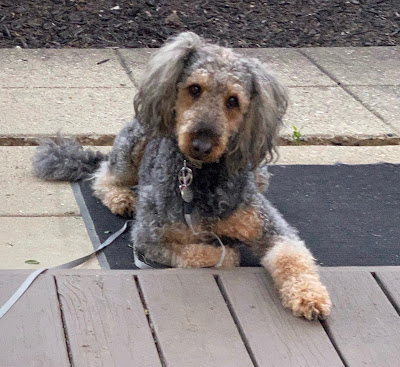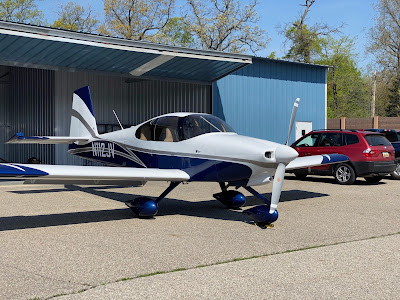Yesterday, I got up early and headed out to Grass Lake, Michigan for MDFI's foundation carbine class. My first carbine class, so I was looking forward to it.
Grass Lake is west of Ann Arbor, so it was about an hour away in the relatively light Sunday morning traffic. Having never been to the range there, it was a good thing I left early, as the range wasn't quite where the mapping software said it was, which led to a bit of consternation. Turns out it was actually about a mile from where the mapping software said the entrance was, but at least the entrance was on the same street so all was well. Not a huge deal but it's good to be early.
I got there and unpacked in a light rain that soon became a minor downpour. Fun training. Luckily, some people had brought some canopies and generously shared their space.
We all got checked in, with one no-show. So the class started with 19 students and 4 instructors, which was a very good ratio for a basic carbine class.
The safety and objectives briefing was lengthy and properly serious.
It was going to be a hot range, with the students responsible for keeping their carbines loaded and ready at all times, so careful muzzle discipline at all times was the order of the day. Excellent instruction and demonstration of the proper method of picking up and slinging a loaded carbine and moving in a way that you do not muzzle yourself or anyone else. Since we would be donning and doffing the carbines multiple times throughout the day and moving on and off the line with them, this was good to learn right off the bat and everyone was committed to doing so safely.
The rain then stopped and eventually the sun came out, which was nice.
Then we went over basics of I&I - inspection and inventory - checking over all the failure points of the firearm to make sure all was ready from muzzle to the heel of the stock- mounts, lights, optics and mounts properly tightened down, sling properly configured, ammunition ready. Good procedure.
The class was then divided into two squads with one shooting and one learning by observing. This also let the 4 instructors really pay close attention, and give personal attention to the shooters which was helpful.
Then there was a warm-up at 5 yards. 17 of the students were running AR15s, one was running an AK, and I brought along my Tavor X95 with the can as I wanted to work on it and get better with it.
I had not shot the Tavor at such a short range and I had to work on my sight hold as my normal sight picture would shoot low at 5 yards. Good to know.
Almost immediately, we had a couple AR-15s lock up as they were being run drier than the proverbial popcorn fart.
One had to be mortared open which was instructive - to mortar an AR (1. Move stock to its closed position [or you will bend/break the stock tube], 2. Put safety on if possible, 3. Keep muzzle in safe direction, 4. With a hand pushing on charging handle, wham the stock in the the dirt in an attempt to free the charging handle/bolt - it works).
In short for semi-auto rifles, clean and dry is iffy in terms of function, clean and dirty is very iffy in terms of function, clean and wet should work, and dirty and wet should work. After some generous lubrication was applied to both of the ARs they were then up and running for the rest of the class.
Next we did the different ready positions, threat engagement, and post threat scan including how to do a 360 degree scan without muzzling anyone or yourself with muzzle either up or down.
After that was various reload techniques. Reloads with retention, speed reloads, and emergency reloads were done with the various varieties explained and practiced. The L shape for fast retention reloads works really well on the Tavor, the OK technique doesn't work well at all given the position of the magazine well and your shoulder.
One new insight came out of the reload portion. You can stuff 31 rounds into a Magpul PMAG. If you're doing a reload with a round in the chamber and the bolt forward, the magazine will not want to fit into the gun as a result. Something to watch for.
Then we did hands-on malfunction drills including how to clear double feeds and the brass over bolt malfunction. This involved setting up the malfunction for your opposite squad member without them seeing what you did, and they had to diagnose and fix the problem and get the carbine back in action. Fun.
My Tavor ran like a top throughout the class with no issues, and
cleared simulated malfunctions like double feeds without a problem.
Then we finished up with the qualifier which was 14 rounds. I hit all 14 in the advanced inner box but was just too slow on the reloads, having badly bungled one and that cost me. I now know what to practice, as I have not previously practiced rifle reloads on the clock, but will now. Good to know what to work on to improve.
It was an all-day class starting at 9 and ending at 6:30, and very well run.
Foundation carbine is both a stand-alone class and MDFI's gateway to their more advanced carbine classes. As a comprehensive, basic-level class, it gave a good grounding in the fundamentals of carbine handling and usage. It was an excellent full day of instruction with a great set of instructors and a great set of students.


































